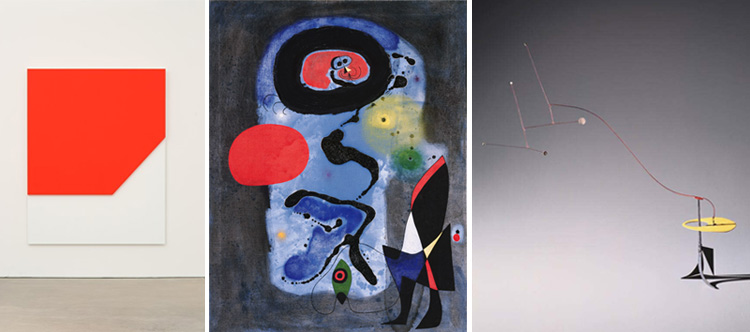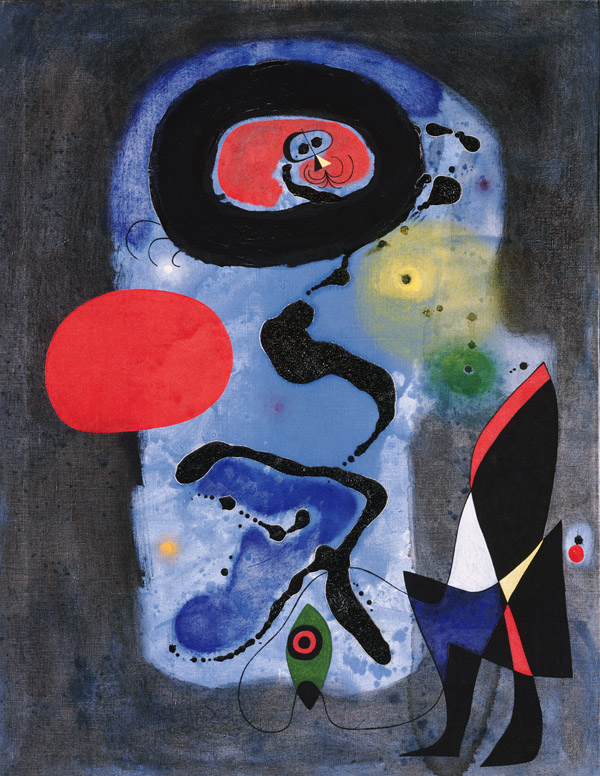
(Left) Ellsworth Kelly, Red Relief, 2009. Oil on canvas, two joined panels, 80 x 62 1/2 x 2 5/8 in. Private collection. Photo: Jerry L. Thompson, courtesy the artist © Ellsworth Kelly (middle) Joan Miró, The Red Sun, 1948. Oil and gouache on canvas, 36 1/8 x 28 1/8 in. Acquired 1951. The Phillips Collection, Washington, D.C. (right) Alexander Calder, Untitled, 1948. Painted sheet metal and wire, 26 x 26 x 5 1/2 in. Gift from the estate of Katherine S. Dreier, 1953. The Phillips Collection, Washington, D.C.
It is always fun to hear the stories behind a work of art, giving an otherwise unknown perspective on the painting. Duncan Phillips wanted to show “art beyond ‘isms,’” and I found it interesting that while he was not keen on surrealism, he acquired Joan Miró’s The Red Sun (1948) on the grounds that it fit in with the rest of his collection. Our guide for this spotlight talk, Paul Ruther, pointed out this connectivity and discussed the painting’s similarities to other works currently on view nearby–the surrounding Ellsworth Kelly panels (use of similar, bright primary colors) and Alexander Calder mobiles (floating objects in space).
Miró’s whimsy was not only evident in his art, but also his personality. After visiting the United States and New York for the first time, he returned to Spain with an unusual souvenir—sidewalk toys, which he added to his personal toy collection. In fact, some of the toys’ faces are strikingly similar to the background face in this painting!
Hannah Hoffman, Marketing Intern

